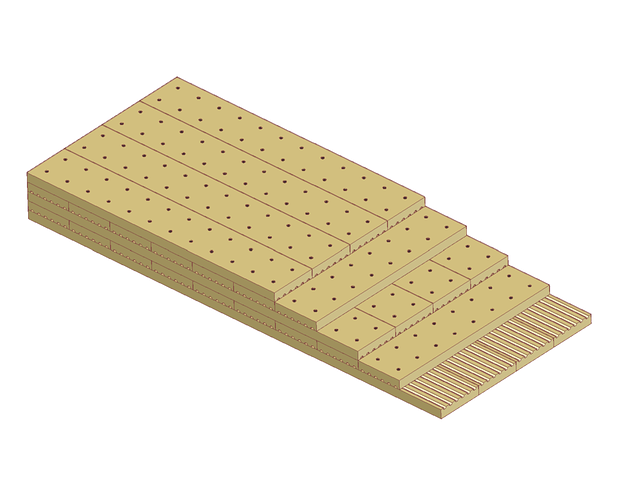Hello everybody,
I have a very general question regarding the direct implementation of materials using material striffness matrices. I only found ways to define materials using well-known material constants such as Youngs modulus, Poisson’s-ratio etc. But this approach does not suit my case. The background is the following:
I try to simulate an experimental setup for new types of cross laminated/nailed timber. Due to many influences such as varying layer thicknesses, unsymetric cross sections or flexible connections the material model behind these specimens is rather complex and most important unkown beforehand. The basic idea is to obtain some rough estimations about the experimental outcome in order to properly calibrate the measuring instruments and to get a estimation of the quality of the experiment.
The input I get for each new specimen is basically only a [6x6] material stiffness matrix. Most times I do not know beforehand of what type the material behaviour is - i.e. isotropic, orthogonal, … . Moreover the entries of the material stiffness matrix may be obtained by different kinds of experimental setups meaning there is no guarantee that the material stiffness matrix coincides with an existing model (orthogonal/isotropic/…). Such a coinicidence may be true in some extent but in general it might not hold. Thus even knowing the closest type of behaviour of the material would not lead to a consistent implementation of the material in Sofistik. The reason is simple: if I use well known material constants as Youngs moduli, shear moduli or orthogonal thicknesses I always get many dependencies between the entries of the matrix I cannot guarantee to be true.
Thus I am looking for a possibility to define a new material simply by defining a material matrix directly in AQUA. In other words I do not want to construct a material stiffness matrix by using material constants I do not know (and by assuming them creating a modelling mistake), I want to enter them directly. Is there a possibility to do so?
